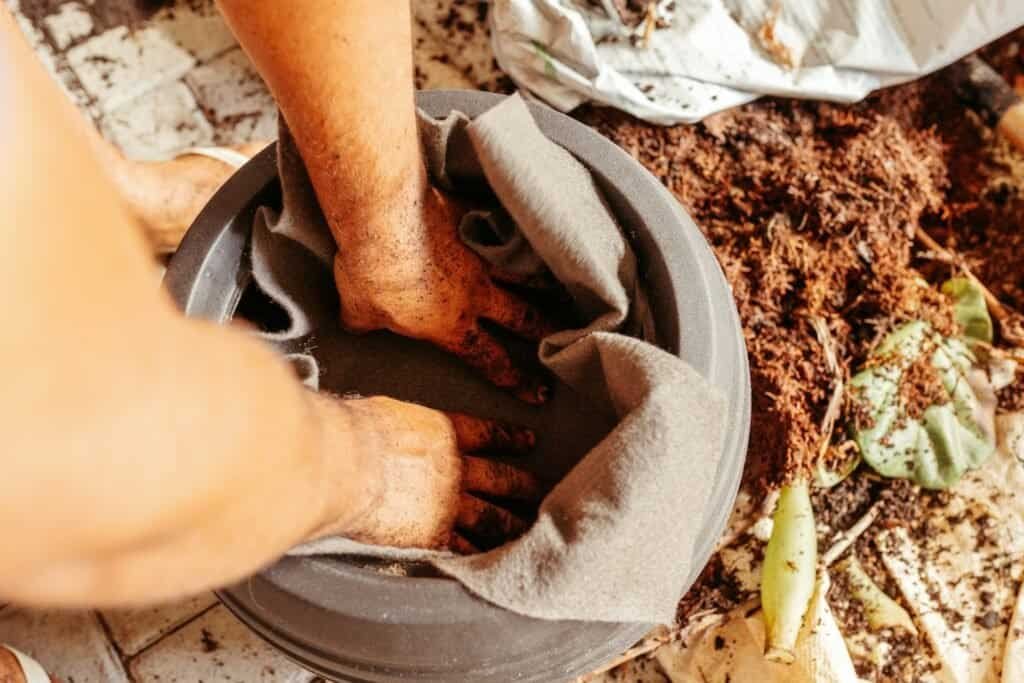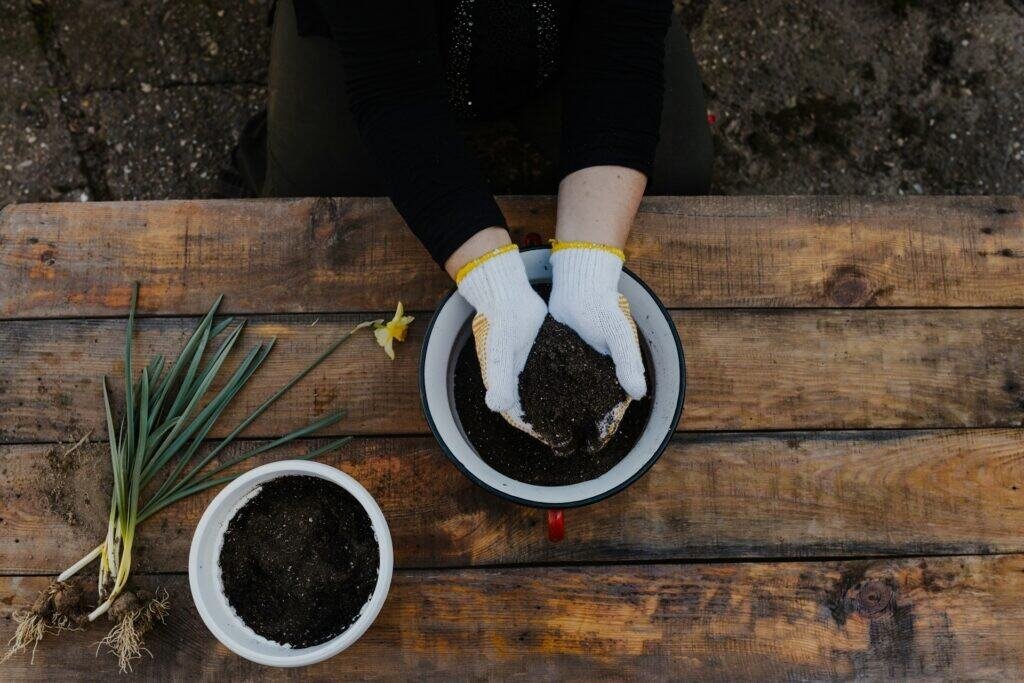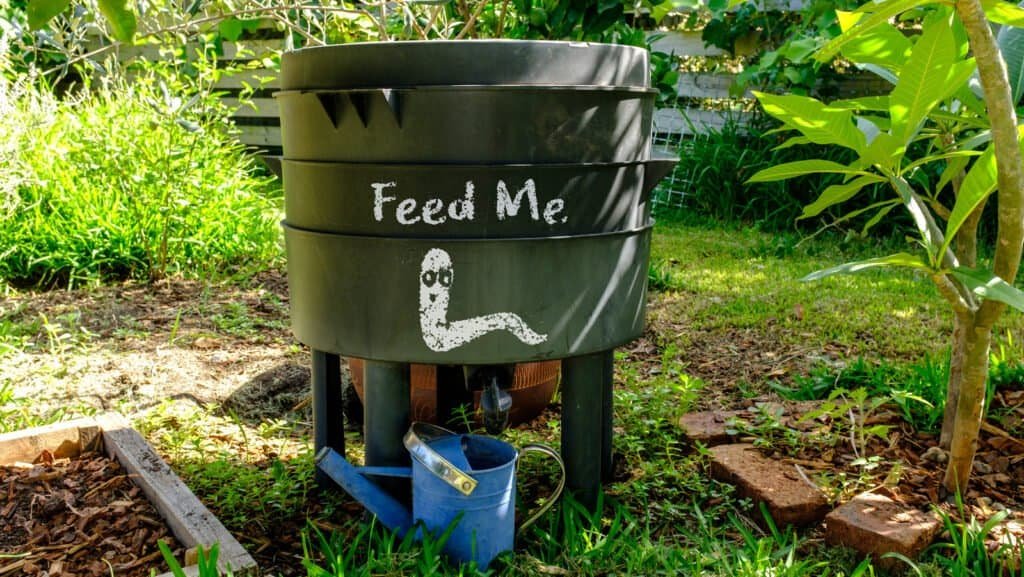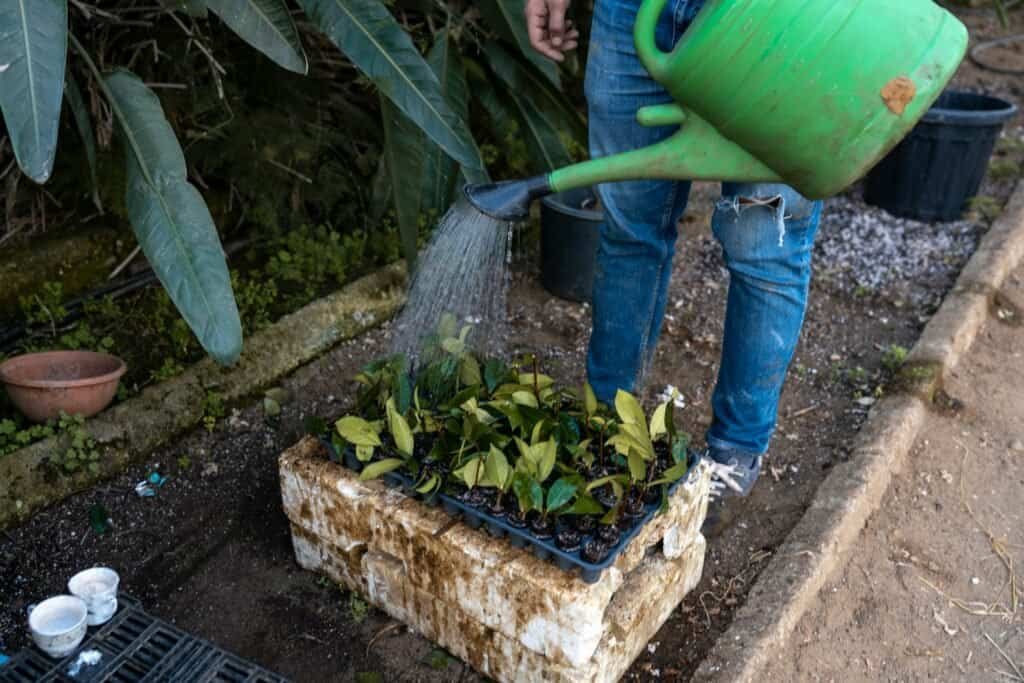Compost tea is a nutrient-rich liquid created by steeping compost in water, harnessing the essence of compost to deliver a powerful boost to plants and soil. Mark, a seasoned landscape architect, understands that a healthy garden requires more than just water and sunlight. By making compost tea, gardeners can introduce beneficial microorganisms and nutrients that enhance plant growth and improve soil structure.
Through this comprehensive guide, Mark will demystify the process, sharing his expertise on how to concoct this potent brew. Whether you’re a beginner or an avid gardener, learning to make compost tea can be a simple and rewarding way to help your plants grow and thrive.
Introduction to the Benefits of Compost Tea
Compost tea is not just another garden trend; it’s a proven method to boost plant health and vitality. Mark often highlights how it acts as a natural fertilizer, supplying plants with essential nutrients and enhancing their ability to fight off diseases. The benefits of compost tea extend beyond just nourishing plants; it also contributes to building a robust soil structure, which is foundational for sustainable gardening.
The microbial life within compost tea works to break down nutrients, making them more accessible to plants. This increased bioavailability means that plants can absorb nutrients more efficiently. Gardeners have noted visible improvements in plant growth and vigor after applying compost tea, with healthier root systems and more abundant blooms.
Furthermore, compost tea fosters a strong and diverse soil food web. The beneficial bacteria and fungi within the tea help to suppress pathogens, reducing the need for chemical pesticides. Mark often emphasizes the importance of this organic approach, as it aligns with his philosophy of creating eco-friendly landscapes that are safe for families and the environment.
Another notable benefit is the enhancement of plant resilience to environmental stressors, such as extreme temperatures and drought. By improving the plant’s overall health, compost tea helps to create hardier specimens that are better equipped to withstand challenging conditions.
When Mark discusses compost tea recipes with fellow gardeners, he stresses the importance of tailoring the tea to specific plant needs. Different recipes can be created to address various deficiencies or to bolster certain aspects of plant growth, such as flowering or root development.
Incorporating compost tea into regular garden maintenance routines can lead to a noticeable difference in the garden’s health and productivity. It’s a simple yet effective tool that can transform the way gardeners care for their plants, contributing to a more vibrant and thriving garden ecosystem.

Essential Elements of Compost Tea
Compost tea’s effectiveness hinges on its ingredients and the balance between them. Mark knows that a well-crafted tea can work wonders in the garden.
The composition of compost tea is a delicate balance of microorganisms, nutrients, and water. Mark often explains that the quality of the compost used as the base is crucial, as it should be teeming with beneficial microbes that will multiply during the brewing process.
Choosing the Right Ingredients
Selecting the right ingredients is paramount to creating a powerful compost tea. Mark guides gardeners to use high-quality components for optimal results.
Worm Castings and Their Role
Worm castings are the cornerstone of many effective compost tea recipes. Mark recommends them for their high concentration of beneficial microbes and nutrients, which are essential for plant growth. When added to compost tea, worm castings act as a catalyst, encouraging the proliferation of helpful bacteria and fungi.
As a landscape architect, Mark understands the importance of utilizing natural processes to fertilize your plants. He views worm castings as an invaluable resource, one that mimics the earth’s method of recycling nutrients and sustaining plant life.
The Impact of Molasses on Compost Tea
Molasses plays a critical role in composting tea by serving as a food source for beneficial microbes. The sugars in unsulphured molasses fuel the microbial activity, leading to a more dynamic and effective tea. Mark frequently includes molasses in his recipes to ensure a thriving microbial population.
He also points out that molasses enhances the tea’s ability to adhere to leaves when used as a leaf spray, providing direct nutrition to plants. Mark’s experience with molasses underscores its value in not just enriching the tea but also maximizing its efficacy as a foliar application.
Gathering Your Supplies
Before brewing, Mark gathers all the necessary supplies, ensuring he has everything on hand to create a high-quality compost tea.
Equipment Checklist
At the top of Mark’s equipment checklist is a sturdy bucket, an indispensable tool for any gardener preparing compost tea. This simple container will serve as the vessel for the brewing process.
Ingredient List
Mark’s ingredient list for compost tea includes unsulphured molasses, kelp meal, and worm castings. These components provide a rich food source for microorganisms and help to fertilize your plants naturally. To ensure the tea is safe for plants, he also ensures the water is free of chlorine and chloramine.
Liquid kelp is another key ingredient Mark uses for its trace minerals and growth hormones, which can give plants an extra boost. He often reminds fellow gardeners to use pure molasses to avoid any additives that could harm the beneficial microbes in the tea.

Step-by-Step Brewing Instructions
Mark outlines a straightforward approach to brewing compost tea, ensuring clarity and success for gardeners at any skill level.
1. Preparing Aerated Compost Tea
To prepare actively aerated compost tea, Mark advises using a nylon stocking to hold the compost and other solid ingredients. This tea mixture will then brew for 24 hours to achieve a high level of microbial activity.
2. Assembling Your Aerated Brew System
An essential component of the aerated brew system is the air pump, which Mark incorporates to provide oxygen, fostering a healthy environment for aerobic microbes to thrive.
During the brewing process, Mark uses a 5-gallon bucket and ensures the mixture is well aerated. He sometimes adds humic acid to further stimulate microbial growth and enhance nutrient uptake by plants.
3. Creating Non-Aerated Compost Tea
For non-aerated compost tea, Mark suggests a simpler method that involves mixing and steeping for a duration of 7 to 10 days. This method is optional and less labor-intensive.
To make non-aerated compost tea, begin with a 5-gallon bucket filled with water, preferably non-chlorinated. Add 2 cups of well-aged compost to the bucket, stirring to mix thoroughly. Cover the container with a burlap sack or an old t-shirt to keep out debris and insects. Let the mixture steep for 24 to 36 hours, depending on the temperature and the compost’s maturity, stirring occasionally to distribute the nutrients evenly.
Once steeped, the compost tea should be a dark, earthy color, indicating that it’s ready to use. Strain the liquid to remove any solid particles, which can be returned to the compost pile. The resulting tea should be used within a few hours to ensure that the beneficial microbes remain active and effective when applied to your plants.
4. Tips for Non-Aerated Tea Success
For successful non-aerated compost tea, stir the mixture vigorously for at least 2 minutes to ensure proper distribution of the microorganisms. This simple agitation step is crucial for enhancing the microbial life within the tea. Additionally, use the compost tea within 7 to 10 days for best results. After this period, the microbial activity diminishes, reducing the tea’s effectiveness.
To prevent mold growth and anaerobic conditions, which can harm plant roots, it’s optional but recommended to add an air pump to the non-aerated tea. If an air pump is not available, ensure the tea is not sealed tightly and is used promptly after brewing. Regular stirring can also help maintain some level of oxygenation, preserving the tea’s quality.
The Application Process
Once your compost tea is ready, it’s time to apply it to your garden. There are two primary methods for applying compost tea: as a soil drench or as a foliar spray. Each method serves a different purpose and can benefit your plants in various ways. Choosing the correct application technique is essential to maximize the efficiency of your homemade compost tea.
Soil Drench Technique
Applying undiluted compost tea to the garden soil is known as the soil drench technique. This method enriches the soil with beneficial microorganisms, enhancing nutrient availability for plant roots. To drench the soil, simply pour the tea around the base of your plants, soaking the soil thoroughly. This encourages healthy root development and can improve the overall vigor of your plants.
When adding compost tea to your garden, it’s best to do so early in the morning or late in the afternoon to minimize evaporation and allow ample time for absorption. Regularly treating your garden soil with compost tea can lead to a more vibrant and resilient garden ecosystem, better equipped to withstand pests and diseases.
Foliar Spray Application
Foliar application of compost teas involves spraying a diluted solution directly onto plant leaves. This method can provide plants with a quick nutrient boost and introduce beneficial microorganisms that help protect against foliar diseases. For foliar spray, dilute the compost tea with water at a ratio of 1:10 to ensure that it is gentle enough for the leaves.
Use a clean spray bottle or backpack sprayer to apply the tea evenly over the leaves, covering both the tops and undersides where pests and diseases often reside. The best time to spray is early morning or late evening to avoid leaf burn from the sun and to allow the beneficial microorganisms ample time to establish on the leaf surfaces.

Advancements in Compost Tea Making
With gardeners and farmers seeking more sustainable practices, advancements in compost tea making have led to innovative and effective recipes that cater to various plant needs.
Innovative Compost Tea Recipes
An advanced compost tea recipe might include 2 cups of organic compost, 1 tablespoon of unsulphured molasses to feed the microbes, 1 teaspoon of liquid kelp for micronutrients, and 1 teaspoon of diatomaceous earth for added pest control. Some gardeners also include kelp meal and predatory nematodes to target specific pests. This mixture can be brewed in a DIY compost tea system with an air pump to ensure a rich blend of healthy soil-promoting organisms.
When applied, these customized teas can enhance plants and soil, offering targeted benefits such as improved nutrient uptake and increased resistance to pests and diseases. It’s important to note that too much of any additive, such as kelp or molasses, can burn plants, so adhering to recommended quantities during the brewing process is essential for plant safety.
Experimenting with Brewing Times
Brewing times for compost tea can vary, and experimenting can help you find the sweet spot for your specific garden’s needs.
When Is Compost Tea Fully Brewed?
Compost tea is considered fully brewed when the liquid is dark brown, has a sweet, earthy smell, and is teeming with life under a microscope. Generally, this takes between 24 to 36 hours when using an aerated brewing system. Non-aerated teas may take longer, and it’s essential to use them before the microbial activity declines.
Understanding Brew Longevity
The vitality of compost tea diminishes over time. Aerated teas should be used within 4 to 6 hours after brewing for maximum efficacy. Non-aerated teas can last up to 7 to 10 days, but the sooner they are applied, the more beneficial they are for the plants. Always observe the tea’s color and odor as indicators of its freshness and vitality.
Safety and Precautions
While compost tea is a natural product, handling it with care is important to avoid contamination and ensure plant safety. Always use clean equipment and quality ingredients to prevent the introduction of harmful pathogens.
Avoiding Common Pitfalls
One of the common pitfalls in making compost tea is using poor-quality compost, which can harbor harmful bacteria and reduce the effectiveness of the tea. Always start with mature, well-cured compost to ensure a beneficial microbial population. Additionally, avoid over-brewing or under-brewing the tea, as this can lead to an imbalance in microbial life, rendering the tea less effective or potentially harmful.
Another pitfall is improper storage. Compost tea should not be stored in sealed containers without air circulation, as this can create anaerobic conditions that promote the growth of undesirable bacteria. Always use the tea promptly after brewing, and clean all equipment thoroughly between batches to prevent cross-contamination.
Signs of a Bad Brew
Indicators of a bad brew include a foul odor, such as that of rotten eggs, which suggests anaerobic decomposition. Additionally, a slimy or discolored appearance can indicate contamination. If you suspect that your compost tea has gone bad, it’s best to discard it and thoroughly clean your brewing equipment before attempting another batch.

The Versatility of Compost Tea
Compost tea is a versatile addition to any gardening regimen, adaptable to various plant types and garden conditions, enhancing plant health and soil vitality.
Compost Tea for Different Plant Types
Different plant types can benefit from the application of compost teas. For example, adding humic acid to homemade compost tea can be especially beneficial for acid-loving plants, while regular compost can be used to create a more balanced tea for a wide range of vegetables and flowers. The flexibility of compost tea allows gardeners to tailor their applications to meet the specific nutritional needs of each plant.
Seasonal Considerations for Compost Tea Use
The effectiveness of compost tea can vary depending on the time of year it is applied. During the spring, applying compost tea can give plants a boost of nutrients and beneficial microorganisms as they emerge from dormancy. In the heat of summer, it’s important to apply it either in the early morning or late evening to avoid scalding the plants and to help them cope with stress from heat and drought. Fall applications can aid in root development and help perennials store energy for the winter. However, avoid using compost tea late in the season as it can stimulate new growth that won’t withstand cold temperatures. By considering these seasonal nuances, gardeners can maximize the benefits of compost tea for their plants.
Conclusion: Cultivating Healthier Plants with Homemade Compost Tea
Embracing the practice of brewing compost tea offers gardeners a potent tool for enhancing plant health and ensuring vigorous growth. By adding just 2 tablespoons of aerated or non-aerated tea directly to the garden bed, one can deliver a concentrated dose of nutrients to the soil, bolster the microbe population, and aid in seed germination. Foliar sprays, or leaf sprays, provide a direct nutrient uptake for plants, helping them to resist pests and diseases. Similarly, soil drenches allow the beneficial elements of compost tea to soak into the soil, enriching the environment where roots thrive.
Whether using 4 cups of compost for a robust batch or just 1 cup of compost for a smaller application, homemade compost tea stands as a cornerstone of organic gardening. The process is as simple as allowing the compost to steep and then straining the compost out, yet the results are remarkable. Plants treated with compost tea often show increased nutrient content, enhanced ability to burn plants, and improved organic pest control, reducing the reliance on harmful bacteria. By integrating compost tea into regular garden maintenance, gardeners can create healthier plants that flourish throughout the growing season.


